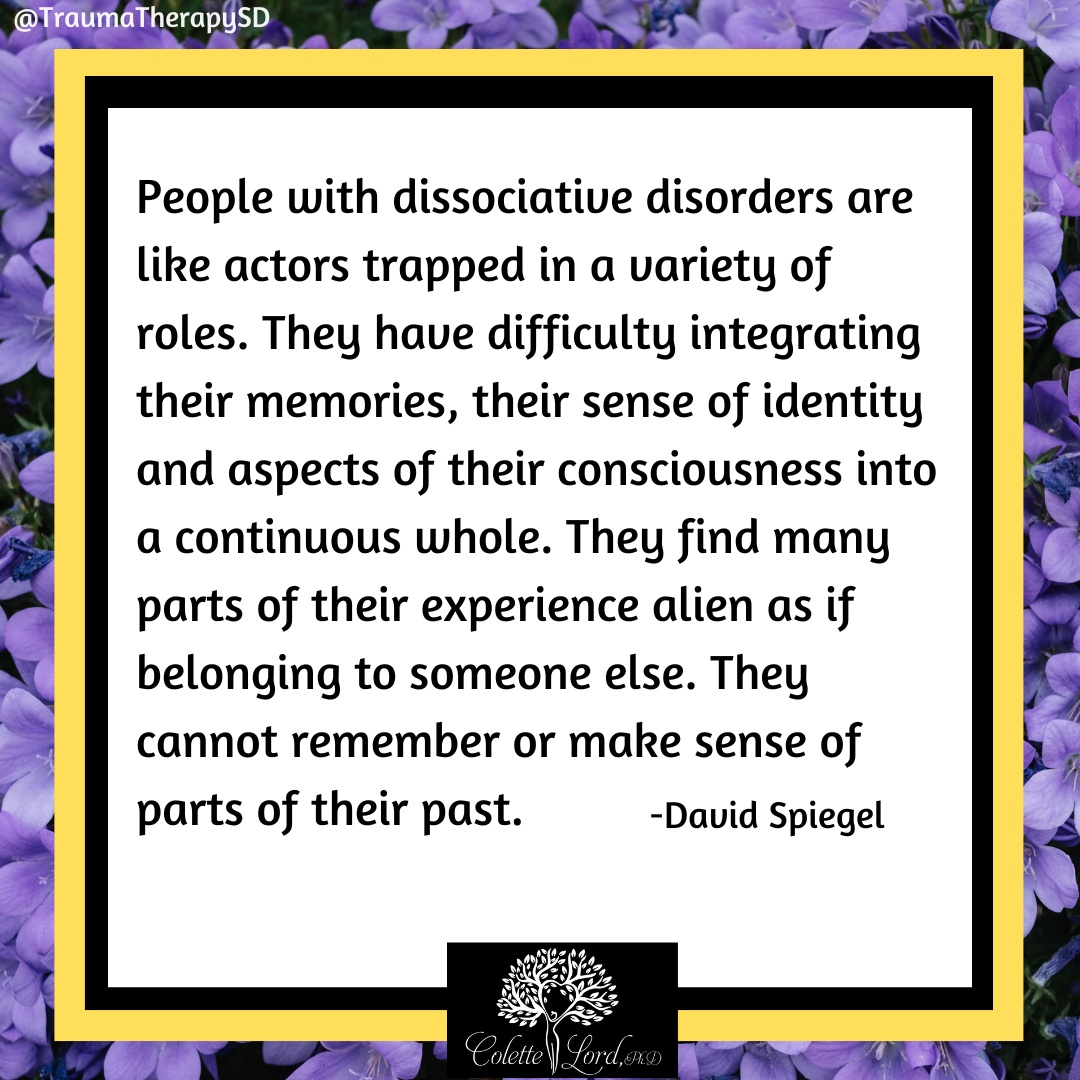Quote from David Spiegel

I’ve been thinking a lot lately about how one explains Dissociative Disorders to people in general to help them understand it, without fearing it.
I like David Spiegel’s explanation here, it is very normalizing. It doesn’t focus on the cinematic idea of “people” with different ways of dressing and speaking, etc.
People with Dissociative Identity Disorder or Other Specified Dissociative Disorder do no have parts that are stuck in “roles” that were formed in trauma. These are the jobs they take on to help manage life and keep the person functioning (whatever that may look like).
They are trapped because the situations in which they were formed have by now ended or changed, but the parts remain trapped in old ways of managing life.
These different parts have difficulty integrating their memories and sense of identity into a whole because it was important when they were developed to remain separate. It would have been too much, too overwhelming, or too upsetting to know everything.
This in turn makes it difficult to make sense of themselves, their past and their present.
Dissociation of this type is the brain’s incredibly creative and resilient way of helping people survive. The problem comes when those ways no longer work.










